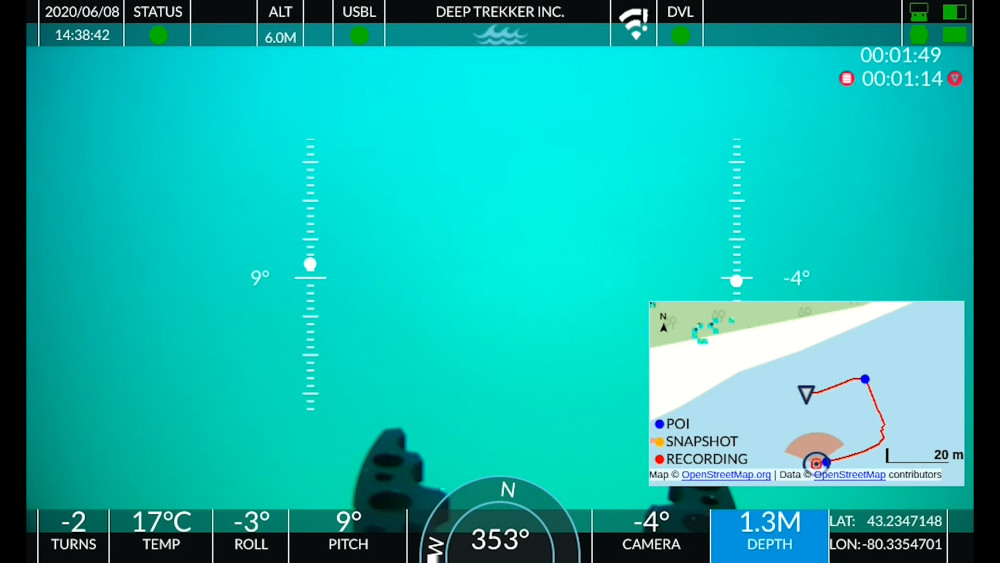Home › Forums › ROV › ROV Technical Discussions › Subsea hydraulic pressure gauges
- This topic has 13 replies, 8 voices, and was last updated 17 years, 8 months ago by
GraemeRSU.
-
AuthorPosts
-
February 26, 2007 at 5:35 pm #563
Effy
ParticipantI’m trying to find pressure gauges that are good for deep subsea use, both low (0 – 20, 0-100 psi) and high pressure (0 – 3000 psi) and not having a lot of luck. Does anyone have ones that have worked well for them? Thanks!
February 26, 2007 at 5:54 pm #10614Stephen Black
ParticipantI have got them from hydrasun in the past. They will set them up with a small compensation hose.
Used them a lot on jobs when we need to observe pressures
February 26, 2007 at 7:29 pm #10615Effy
ParticipantThanks! 😀 What depths have you used them? Anything I should look out for with them (oil compatibility, etc)?
February 26, 2007 at 11:08 pm #10616Ray Shields
ParticipantMost people just take a standard gauge, remove the rubber plug, drain out the glycerine, attach a hysdarulic fitting in the hole, attach a clear hose to it (as used on compensators) and fill the whole thing with hydraulic oil.
The clear hose acts as as a compensator, being squeezed at depth.
February 27, 2007 at 2:18 am #10617ROV_VALLEY_COMMANDO
Participantforget the hose plumbed into a standard gauge, shite, what you want are Span gauges, manufactured for going subsea and no compensation required,
can get from hydrasun if you have the correct part number, all different pressure ranges, white lettering on black dial and vice versa all sorts of other combinations available if you have the right info, expensive though.
pm if you want more info.February 27, 2007 at 5:16 am #10618misiuek
Participantforget the hose plumbed into a standard gauge, shite, what you want are Span gauges, manufactured for going subsea and no compensation required,
can get from hydrasun if you have the correct part number, all different pressure ranges, white lettering on black dial and vice versa all sorts of other combinations available if you have the right info, expensive though.why! ray’s suggestion is what we use most frequently, why saves money , is it proven reliability mmm yes, so you have cheap and it works sounds great to me……
February 27, 2007 at 5:42 am #10619ROV_VALLEY_COMMANDO
ParticipantWhy not!! at least they don’t look like someone has knocked them up in their shed. and the Span gauges will last 10 times as long if permanently mounted on the sub.
But if your spending your own money on them then off to the shed it is.February 27, 2007 at 7:25 am #10620Ray Shields
ParticipantWhy not!! at least they don’t look like someone has knocked them up in their shed. and the Span gauges will last 10 times as long if permanently mounted on the sub.
But if your spending your own money on them then off to the shed it is.OR if you happen to be off the coast of some god forsaken country where funnily enough there are no shps selling the gauge you need right now.
Both methods are equally as valid. Certainly if you’re building a new piece of kit, the Span gauge is the way to go, however the oily tube (which, if made prperly does not look THAT bad) method is also equally as valid if you dont have one.
February 27, 2007 at 8:43 am #10621ROVness
ParticipantEasy to google for "subsea gauges" and few companies pop-up.
 [/img]February 27, 2007 at 2:14 pm #10622
[/img]February 27, 2007 at 2:14 pm #10622ROVness
ParticipantWhat would be a good practical for fitting a compensation hose on standard gauge? All I can see that would happen is that the fitting pops off.
February 27, 2007 at 2:28 pm #10623misiuek
Participantits not … ROVness
should be ROVLESS
and its ‘good practice’
why would the fitting ‘pop’ off, is that your idiot question for the day!?
February 27, 2007 at 9:03 pm #10624ROVness
ParticipantThats you (misiuek) than from one of those developing countries judging you from your name and for your English being better than mine, one of those that got colonialized like a bucked of sand long time ago! Thinking you’re a better tech but where is your answer, its you hiding by twisting my words. Grow up mate.
March 16, 2007 at 6:04 pm #10625Horris
ParticipantGotta agree with the Commando ere.
The ones you be wanting are ‘SPAN’ gauges, supplied from the US usually. OIE use them on Millenium etc. Rated to 3000m+.
Dont need to be compbed, and dont have the hazzle of the self made comp hose leaking either. Fully selaed unit.
Got OIE part numbers if u still need ’em. Fairly cheap as well.Maybe Hydrasun are now supplying them as well.
April 29, 2007 at 11:05 am #10626GraemeRSU
ParticipantThe reason that you dont need to add a comp hose to the Span gauges is because they already have an internal diaphragm that acts as a compensator for the glycerol filled part of the gauge.
Span gauges were bought over by Thuemling Instrument Group, Inc
In reality it all depends on how much you want to spend and also where in the world you are.
The comp hose method is the cheaper of the two and it can be done to almost any gauge if you are in a fix, though I find De-wit gauges more reliable and easier to adapt than the hydrasun ones if you have a choice as the De-wit gauges have a threaded port for the breather, which in turn allows you to easily add a comp hose (normally tygon tubing or similar)
If you do go for a purpose built Subsea Pressure gauge you need to be aware of the two different types.
There is the absolute pressure gauge that is sealed in a dry pressure rated housing for use on subsea hardware i.e. production manifolds etc. Internal housing pressure sits at 1 bar atmospheric.
and
There is the oil filled compensated pressure gauge c/w diaphragm which is what is used on ROV’s and Subsea Hardware.
You have to be careful not to mix them up.
The Absolute pressure gauge doesnt compensate for depth i.e. if you are at 1000 mtrs (100 bar ambient water pressure) and your hydraulic system is operating at 200 bar at depth the pressure gauge would read 300 bar.
For an oil filled compensated Pressure gauge for the same conditions you would see 200 bar on the gauge.
-
AuthorPosts
- You must be logged in to reply to this topic.



